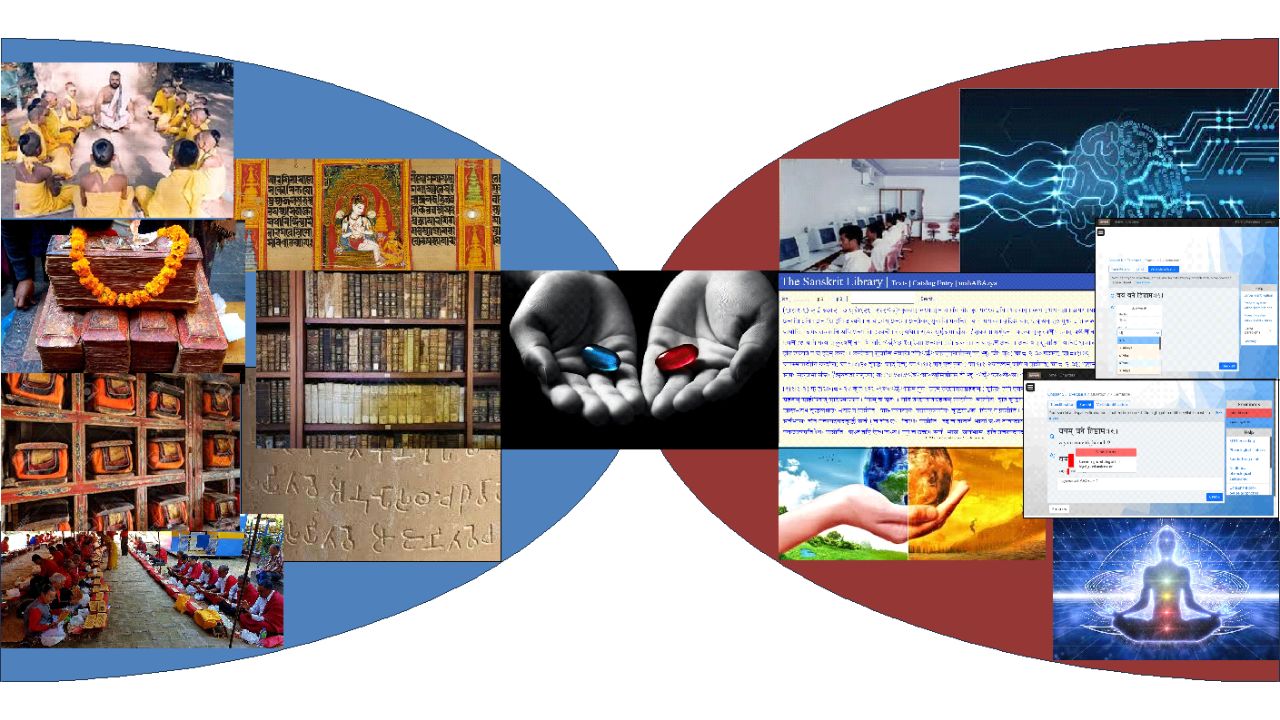Over the course of four millennia, Sanskrit has been the primary language of India that has produced a vast body of literature in all fields of human endeavour. The language and its literature extended throughout Central, East, and Southeast Asia, and the sciences and enlightenment literature of Europe were enhanced by the impact of Indian knowledge that was conveyed through the Middle East. The extensive corpus of Sanskrit literature transmits and preserves knowledge that includes important scientific discoveries and wisdom that can offer crucial direction for the present and future. However, this body of knowledge is currently in danger of being destroyed due to the quick shift in the primary medium of knowledge from written and printed materials to digital media. Within the next century, millions of manuscripts will be lost. It gets harder to access primary sources that have been relocated off-site as support for libraries declines. Digitally scanned books and manuscripts are still inaccessible due to their disarray and inadequate cataloguing.
As fewer scholars gain competence in conducting research in Sanskrit, universities neglect fundamental research in favor of popular themes, and millennial students and scholars accustomed to the digital medium ignore written and printed sources. As a result, this valuable body of knowledge risks perishing from neglect. Current initiatives in India are missing the mark as traditional scholars remain unaware of digital techniques for managing textual information and computer experts untrained or poorly trained in Sanskrit remain unaware of the vast depth and range of the knowledge in it. Without the proper, multi-disciplinary approach, the vast knowledge in Sanskrit will fail to make the transition into the digital realm.
By converting Sanskrit literature into digital format, the Sanskrit Library aims to preserve this corpus of knowledge. By doing this, people will be able to interact with the primary materials and original sources independently rather than depending on others to interpret the texts for them. The Sanskrit Inter-disciplinary Digital Humanities Initiative, or SIDDHI, was started by the Sanskrit Library with the goal of achieving these goals. Four distinct activity streams will comprise SIDDHI: (1) digitise Sanskrit books and manuscripts; (2) enhance manuscripts and printed books with automated transcription and structured markup that adheres to widely recognised standards so that they can be accessed by modern digital methods; (3) educate young scholars in Sanskrit through cutting-edge online courses and in Sanskrit digital humanities to produce high-caliber digital catalogues and editions; and (4) carry out in-depth research using state-of-the-art digital methods. A few examples of accessibility would be providing any text in the reader’s preferred script and developing an extensive knowledge map that provides access to texts, authors, and subjects through a variety of parameters, intelligent search techniques, and indigenous Indian categories. A computational implementation of Panini’s generative grammar of Sanskrit, the Aṣṭādhyāyī, and the application of Indian cognitive linguists’ grammatical tradition analysis techniques to improve the development of superior large language models (LLMs) are examples of groundbreaking, high-impact research.
There are currently two options available to us: either a renaissance that integrates thousands of years of Indian wisdom with modern techniques in the digital age, or Sanskrit studies’ reach will diminish and Sanskrit knowledge will eventually disappear. Kindly get in touch. Make sure Sanskrit thrives so that it can help humanity navigate the most important issues of the day.


